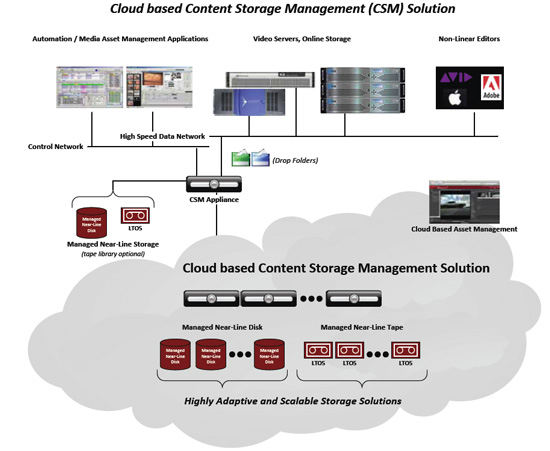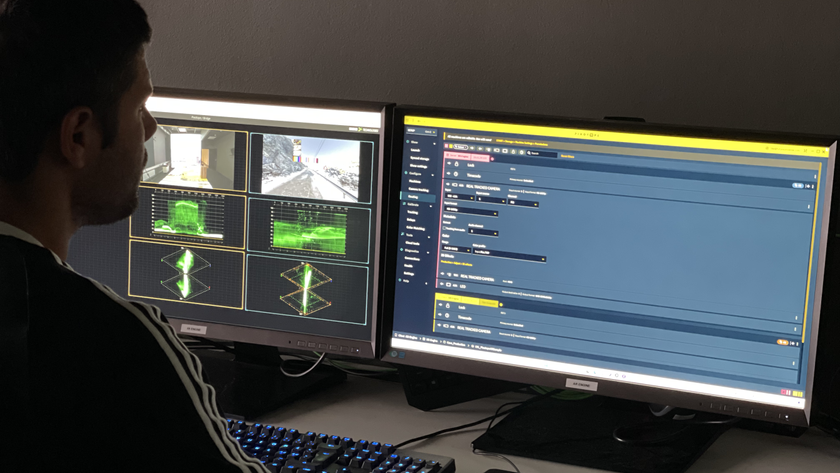Caching Cloud Content Locally Streamlines the Process.
In today’s highly competitive broadcast environment, where even big-budget broadcasters are operating on the thinnest of margins, efficiency is of utmost importance. It is against this backdrop that many broadcasters are considering a move to cloud-based operations. Cloud technology has come so far that it is now a feasible solution for pro AV applications as well. There are cloud-service options that can be billed monthly, making capital expenditure unnecessary and delivering all of the technical flexibility needed to cope with evolving demands. That is why AV operations of all types have begun to take advantage of the cloud’s scalability, flexibility, and reliability. But whether it is a broadcast network, a service provider, a national archive, a sports team, or any other multisite video operation, they are always looking for ways to simplify cloud services in order to boost operational efficiency, more easily share and collaborate on content, and, in most cases, more easily monetize assets.
Caching cloud content locally through specialized appliances is one way to do it. Simply put, local caching allows an organization to make the best use of bandwidth and other on-site resources by temporarily storing cloud-based content locally so that it is available on-site as quickly as possible, and then either sending it back to the cloud afterward to keep it safe or transferring it to another location, sometimes both.
Local Caching Benefits Tech Managers
One option for today’s local cloud-caching technology is a plug-and-go appliance that works with public, private, and hybrid cloud installations. It is installed on-site to act as local cache for cloud content and also integrate with specialist systems, such as an automation system.
The on-site appliance is effectively a policy server that can be configured for every installation to get content in and out of the cloud efficiently. It allows a set of rules to determine exactly how content should be distributed (e.g., certain content can be transcoded and sent from one location to another automatically), and isolates and abstracts the content in the background to ensure the most efficient use of bandwidth.
- How does local caching boost operational efficiency of cloud services? The ability to work with remote content and move it from site to site depends on the speed of your link. The slower or more congested the link, the longer it takes to manage— and therefore monetize—a piece of content. When that specific piece of content can be pulled down from the cloud, stored temporarily, manipulated locally, and then uploaded back to the cloud for safe storage or availability at another site, connection speed ceases to be an issue. And when many of the actions can be automated, efficiency increases even more. A single appliance simplifies network design and allows for easy provisioning of point-to-point QoS (Quality of Service) if your network and devices are capable of leveraging this technology.
A local caching device communicates with the cloud in the background to make the transfer happen as economically as possible. A local caching device is the link between local systems, such as master control, and remote cloud services—archive storage. All local restore requests can be sent to the local device and, if assets are not available locally, the device will automatically retrieve them from the cloud without user intervention. An optional local tape library is also available with today’s local caching appliance to increase the security of the assets even further.
Pay-Per-Use Basis & Streamlining
The technology may be simple, but it gives organizations that don’t have the budget for full-scale, on-site content storage management (CSM) access to the same capabilities— all optimized for cloud delivery. It enables them to route content to and from a cloudbased CSM service on a pay-per-use basis rather than buying and maintaining expensive on-site equipment.
For others, local caching technology takes away the hassle of managing tape libraries and dealing with technology obsolescence, maintenance problems, etc. Instead they can move their core infrastructure and day-to-day operations to the cloud, and simply link to it via a small caching appliance for a predictable monthly fee. It is the ideal content management solution for smaller sites looking to consolidate infrastructure, while still being securely networked into the main media enterprise.
Ease of Use
Local cloud-content caching technology is all about the efficient use of resources, and any media operation that is concerned about efficiency would benefit from it. When searching for local caching solutions, companies should consider the amount of content they must access locally and how quickly they can access that content with their current setup, and then compare it to the cost of doing so with a caching setup. Companies will also want to take into account factors such as the availability and cost of local conditioned power and cooling/ environmental control for on-site systems along with the elegance of the restore solution, its ease of installation, its flexibility and ease of use, and its ability to integrate with other systems around it.
Local caching of cloud content can simplify a connection to the cloud, enhance cloud communications, and enable local CSM for multisite video workflows in public, private, or hybrid cloud environments. A local caching appliance gives media operations of any size the option to take advantage of the cloud without the investment in equipment and the hassle of maintaining it.
George Zummer is the platform architect with Front Porch Digital.
info
FRONT PORCH DIGITAL
www.fpdigital.com











